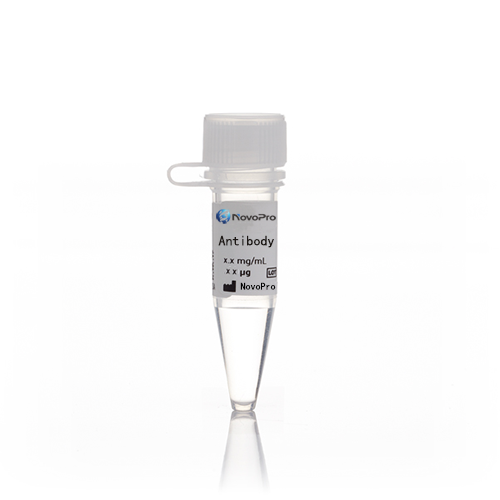-
Product Name
Anti-FKBP14 antibody
- Documents
-
Description
Rabbit Polyclonal to Human FKBP14
-
Tested applications
WB, IHC-P, ICC/IF, IF, IP
-
Species reactivity
Human FKBP14
-
Alternative names
rotamase antibody; rotamase antibody; EDSKMH antibody; FKBP22 antibody; IPBP12 antibody; FKBP22 antibody; FKBP-14 antibody; BC029109 antibody; 22 kDa antibody; 22 kDa FK506-binding protein antibody; 22 kDa FKBP antibody; BC029109 antibody; EDSKMH antibody; FK506 binding protein 14 antibody; FK506 binding protein 14 antibody; FKBP14 antibody; Fkbp14 antibody; FKBP-14 antibody; FKBP22 antibody; FKBP22 antibody; FKBP-22 antibody; IPBP12 antibody; peptidyl-prolyl cis-trans isomerase FKBP14 antibody; peptidyl-prolyl cis-trans isomerase FKBP14 antibody; PPIase FKBP14 antibody; PPIase FKBP14 antibody; UNQ322/PRO381 antibody
-
Isotype
Rabbit IgG
-
Preparation
Produced in rabbits immunized with purified, recombinant Human FKBP14 . FKBP14 specific IgG was purified by Human FKBP14 affinity chromatography.
-
Clonality
Polyclonal
-
Formulation
0.2 μm filtered solution in PBS
-
Storage instructions
This antibody can be stored at 2℃-8℃ for one month without detectable loss of activity. Antibody products are stable for twelve months from date of receipt when stored at -20℃ to -80℃. Preservative-Free.
Sodium azide is recommended to avoid contamination (final concentration 0.05%-0.1%). It is toxic to cells and should be disposed of properly. Avoid repeated freeze-thaw cycles. -
Applications
WB: 1-5 μg/ml
IHC-P: 0.1-2μg/mL
ICC/IF: 0.5-3μg/mL
IP: 1-4 uL/mg of lysate
-
Background
FKBP14 belongs to the FK506-binding protein family. It contains 2 EF-hand domains and one PPIase FKBP-type domain. FKBP14 can be detected in the lumen of the endoplasmic reticulum where it is thought to accelerate the folding of proteins during protein synthesis. Truncation of the amino-terminus of FKBP14 significantly decreases peptidyl prolyl cis-trans isomerase activity, therefore implicating that the PPIase FKBP-type domain must be located at the N-terminus. Defects in FKBP14 can cause Ehlers-Danlos syndrome with progressive kyphoscoliosis, myopathy, and hearing loss. A syndrome with features of Ehlers-Danlos syndrome types VIA and VIB on the one hand, and the collagen VI-related congenital myopathies Ullrich congenital muscular dystrophy and Bethlem myopathy on the other hand.
Related Products / Services
Please note: All products are "FOR RESEARCH USE ONLY AND ARE NOT INTENDED FOR DIAGNOSTIC OR THERAPEUTIC USE"

